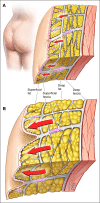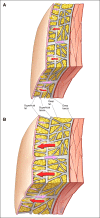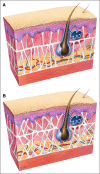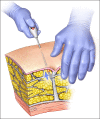Cellulite: Current Understanding and Treatment
- PMID: 37424836
- PMCID: PMC10324940
- DOI: 10.1093/asjof/ojad050
Cellulite: Current Understanding and Treatment
Abstract
Cellulite is an aesthetically distressing skin condition that manifests as dimples and depressions, producing an uneven surface to the skin. Occurring in 80% to 90% of females, mostly on the thighs, buttocks, and hips, it is associated with profound negative psychosocial and quality of life issues. Its ethiopathogenesis and pathophysiology are likely to be multifactorial and complex and not fully understood. There is no effective treatment for cellulite, although a number of different treatment modalities are available, from noninvasive to minimally invasive. The efficacy of most treatments is unpredictable and improvements in cellulite appearance are short lived, although significant progress has been made with newer treatments. This review provides an update on the current state of knowledge about cellulite, with an emphasis on patient assessment and an individualized treatment approach for optimal results.
© The Author(s) 2023. Published by Oxford University Press on behalf of The Aesthetic Society.
Figures






References
-
- Hexsel D, Hexsel C, Weber M. Social impact of cellulite and its impact on quality of life. In: Goldman M, Hexsel D, eds. Pathophysiology and Treatment (Basic Clinical Dermatology), 2nd ed. CRC Press; 2010:1–5.
-
- Hexsel D, Siega C, Schilling-Souza J, Stapenhorst A, Rodrigues TC, Brum C. Assessment of psychological, psychiatric, and behavioral aspects of patients with cellulite: a pilot study. Surgical Cosmetic Dermatol. 2012;4(1):131–136.
Publication types
LinkOut - more resources
Full Text Sources
Medical
